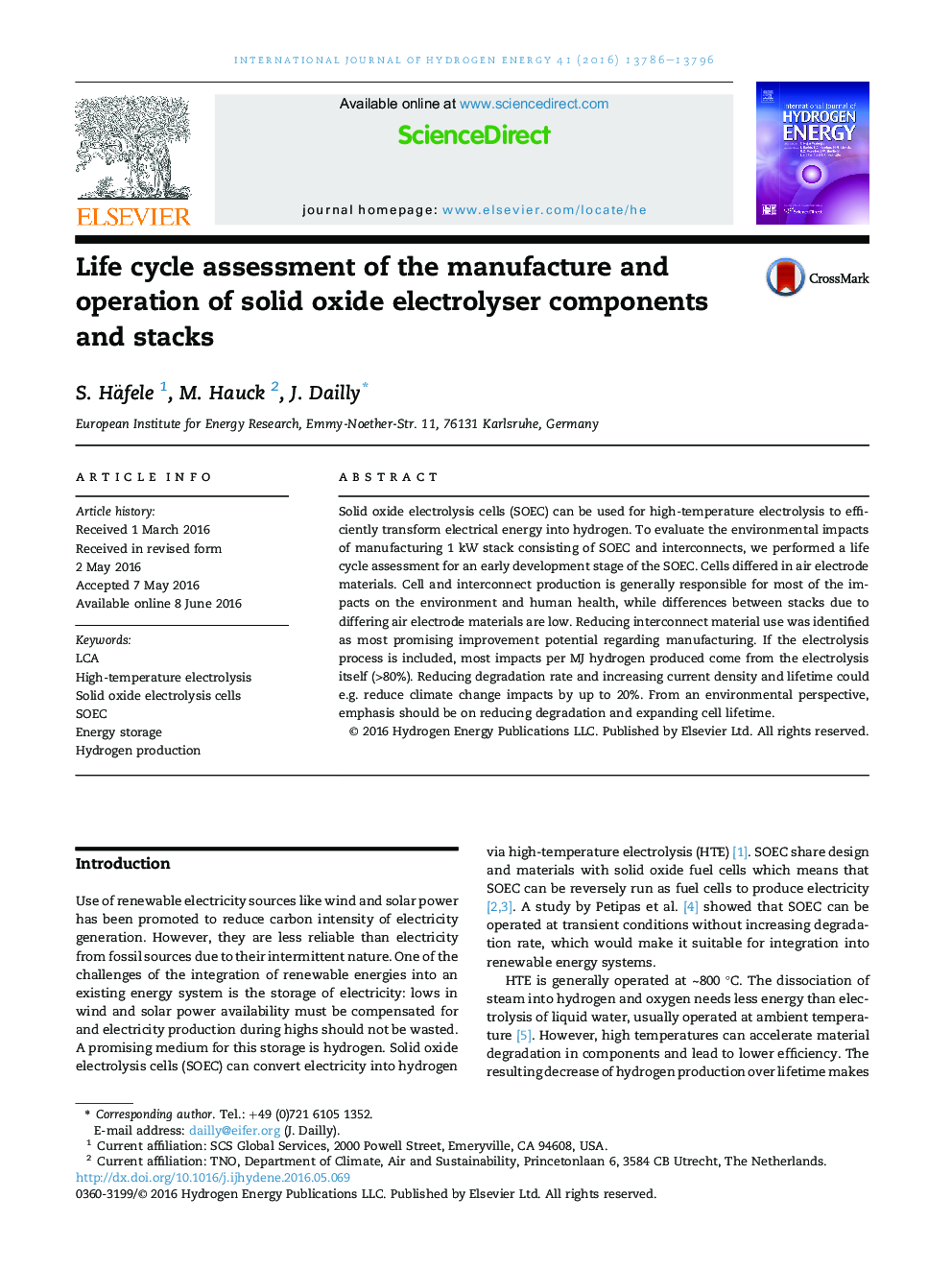| Article ID | Journal | Published Year | Pages | File Type |
|---|---|---|---|---|
| 1276493 | International Journal of Hydrogen Energy | 2016 | 11 Pages |
•Environmental impacts of solid oxide electrolysis stacks were analysed using LCA.•Detailed lab data analysis of cells with different air electrode material.•Increased cell performance can decrease climate change impacts by 20%.•Electricity demand during electrolysis shows overall largest impacts.•Increasing cell efficiency and reducing degradation decreases impacts.
Solid oxide electrolysis cells (SOEC) can be used for high-temperature electrolysis to efficiently transform electrical energy into hydrogen. To evaluate the environmental impacts of manufacturing 1 kW stack consisting of SOEC and interconnects, we performed a life cycle assessment for an early development stage of the SOEC. Cells differed in air electrode materials. Cell and interconnect production is generally responsible for most of the impacts on the environment and human health, while differences between stacks due to differing air electrode materials are low. Reducing interconnect material use was identified as most promising improvement potential regarding manufacturing. If the electrolysis process is included, most impacts per MJ hydrogen produced come from the electrolysis itself (>80%). Reducing degradation rate and increasing current density and lifetime could e.g. reduce climate change impacts by up to 20%. From an environmental perspective, emphasis should be on reducing degradation and expanding cell lifetime.
